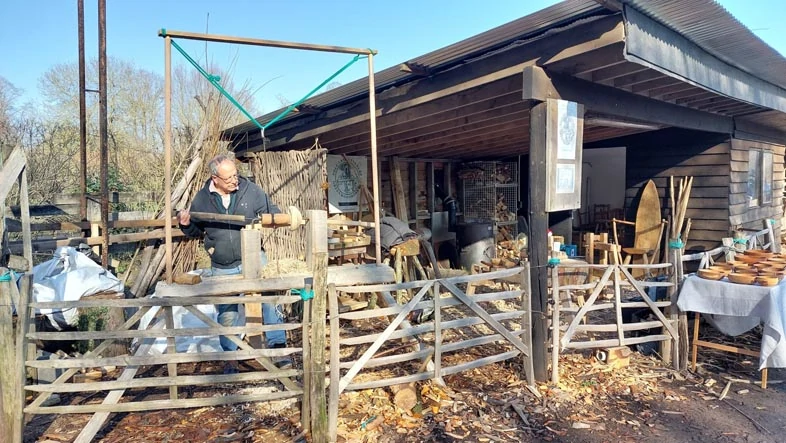
Traditional crafts have been an integral part of human culture for centuries. From bowl-turning to textiles, these art forms have not only served practical purposes but also played a significant role in shaping cultural identity and preserving heritage. In recent years, however, traditional crafts have faced increasing threats, including competition from mass-produced goods and a decline in craftspeople passing on their knowledge to the next generation.
Importance of Traditional Crafts Preserving Cultural Heritage
One of the most important reasons to support traditional crafts is to preserve cultural heritage. These art forms are a tangible link to the past, representing the traditions, beliefs, and values of a particular community. By keeping traditional crafts alive, we are preserving our ancestors’ cultural heritage and helping ensure that future generations have access to these essential aspects of their heritage.
Threats to Traditional Crafts
Competition from Mass-Produced Goods One of the biggest threats to traditional crafts is competition from mass-produced goods. In many cases, these goods are cheaper and more easily accessible than handmade products, making it difficult for traditional artisans to compete. Additionally, mass-produced goods often lack the unique character and quality of handmade products, making it difficult for traditional artisans to find markets for their goods.
The Decline in Traditional Skills and Knowledge
Another significant threat to traditional crafts is the decline in traditional skills and knowledge. As fewer people learn traditional techniques and skills, the transmission of this knowledge is threatened, and the future of traditional crafts is put at risk. This is particularly true for older artisans, who may not have had the opportunity to pass on their skills and knowledge to younger generations. My own experiences show that people have an appetite for learning crafts and have run many successful bowl-turning courses.
Sources of Support for Traditional Crafts
Thankfully, some organisations are working to preserve craft skills.
The Worshipful Company of Turners
I have personally benefitted from a bursary from the Turners Co. In 2022 I applied for support to learn new skills and build a fleet of pole lathes to offer bowl-turning courses on a pole lathe to small groups.

Heritage Crafts Association
The Heritage Crafts Association offers grants to UK Organisations whose craft is endangered. It’s worth checking out their Red List of Endangered Crafts. It’s good to see that pole lathe turning is listed as sustainable. However, this will only remain the case with the support from people that recognise crafts people don’t sell cheap mass-produced items.
The General Public
By far, the single largest group of people who guarantee that crafts and those making a living from crafts can thrive are the public. Instead of buying mass-produced items from Amazon or overpriced brands on the high street, buying items from independent crafters goes a long way.
However, there are a couple of things I would ask you to look out for:
- Imported craft items. There is a growing trend for people to import items from abroad (often from AliExpress) that appear to be handmade.
- Imported antiques. Whilst these have their charm, I do wonder how ethical it is to import antique items from abroad to resell them as craft items. It dilutes the support that genuine UK craftspeople get from having stands at craft events.
- Side hustles. I don’t begrudge people trying to make a little extra cash – but the proliferation of suppliers offering print-on-demand clothing and printables makes it harder for genuine craftspeople to stand out.
Ways the Public can Support UK Crafts
One criticism I hear from some people is that handmade items can be prohibitively expensive. However, I question whether that is fair. Or have large corporations trained us to accept cheap, mass-produced products?
In my experience, many craftspeople sell their products far too cheaply. Craftspeople often forget to include the time it takes to market their business. For example, time spent writing blogs like this or at crafts fairs trying to sell.
But what is the answer? How can you support local crafts if you can’t afford the prices? The internet has made it easier than ever:
Social Media – the new word of mouth
Dropping a like on a friend’s product, art, or music is free and easy. But that is only the start. How many times have you shared a product on your social media? Do you leave good reviews for products? Commenting on a product helps increase the exposure of craftspeople’s work and shows Google’s and other platforms’ algorithms that the work is interesting.
In summary, it would help if you could:
- Share crafters’ products on your social media.
- Like and comment.
- Leave reviews.
- Watch and share videos.
- Share your favourite crafter’s posts.
In conclusion, traditional crafts are an essential part of our cultural heritage and play a vital role in preserving our history and shaping our identity. Despite facing numerous challenges in recent years, including competition from mass-produced goods and a decline in craftspeople passing on their skills, various sources of support are available, including grants from organizations like the Heritage Crafts Association and the general public. The public can support traditional crafts in many ways, from sharing crafters’ products on social media and leaving reviews to using affiliate schemes and purchasing handmade items. By supporting traditional crafts, we can help keep these timeless art forms alive and ensure that future generations will have the opportunity to appreciate and learn from them.

[…] local helps preserve cultural heritage by supporting traditional crafts. When you choose local businesses, you aid in maintaining unique cultural practices. Local artisans […]